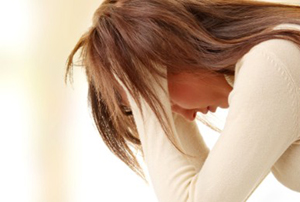Washington, Jul 12: According to a recent study, researchers found that depression has different effects on the brain activity of male and female patients in certain brain regions.
The results suggest that adolescent girls and boys may experience depression differently and that sex-specific treatments might be beneficial for adolescents.
When researchers exposed the depressed adolescents to happy or sad words and imaged their brains, they found that depression has different effects on the brain activity of male and female patients in certain brain regions.
The findings suggest that adolescent girls and boys might experience depression differently and that sex-specific treatments could be beneficial for adolescents.
Men and women appear to suffer from depression differently, and this is particularly striking in adolescents. By 15 years of age, girls are twice as likely to suffer from depression as boys.
There are various possible reasons for this, including body image issues, hormonal fluctuations and genetic factors, where girls are more at risk of inheriting depression.
However, differences between the sexes don't just involve the risk of experiencing depression, but also how the disorder manifests and its consequences.
"Men are more liable to suffer from persistent depression, whereas in women depression tends to be more episodic. Compared with women, depressed men are also more likely to suffer serious consequences from their depression, such as substance abuse and suicide," said Jie-Yu Chuang, a researcher at the University of Cambridge, and an author on the study.
This motivated Chuang and her colleagues to carry out this latest study to find differences between depressed men and women.
They recruited adolescent volunteers for the study, who were aged between 11 and 18 years. This included 82 female and 24 male patients who suffered from depression, and 24 female and 10 male healthy volunteers.
The researchers imaged the adolescents' brains using magnetic resonance imaging, while flashing happy, sad or neutral words on a screen in a specific order.
The volunteers pressed a button when certain types of words appeared and did not press the button when others appeared, and the researchers measured their brain activity throughout the experiment.
When the researchers flashed certain combinations of words on the screen, they noticed that depression affects brain activity differently between boys and girls in brain regions such as the supramarginal gyrus and posterior cingulate.
"Our finding suggests that early in adolescence, depression might affect the brain differently between boys and girls. Sex-specific treatment and prevention strategies for depression should be considered early in adolescence. Hopefully, these early interventions could alter the disease trajectory before things get worse," explained Chuang.
The brain regions highlighted in the study have been previously linked to depression, but further work is needed to understand why they are affected differently in depressed boys, and if this is related to how boys experience and handle depression. Chuang and her colleagues would like to explore this phenomenon further.
Chuang concluded by saying, "I think it would be great to conduct a large longitudinal study addressing sex differences in depression from adolescence to adulthood."
The study was published in journal Frontiers in Psychiatry.






Comments
Add new comment